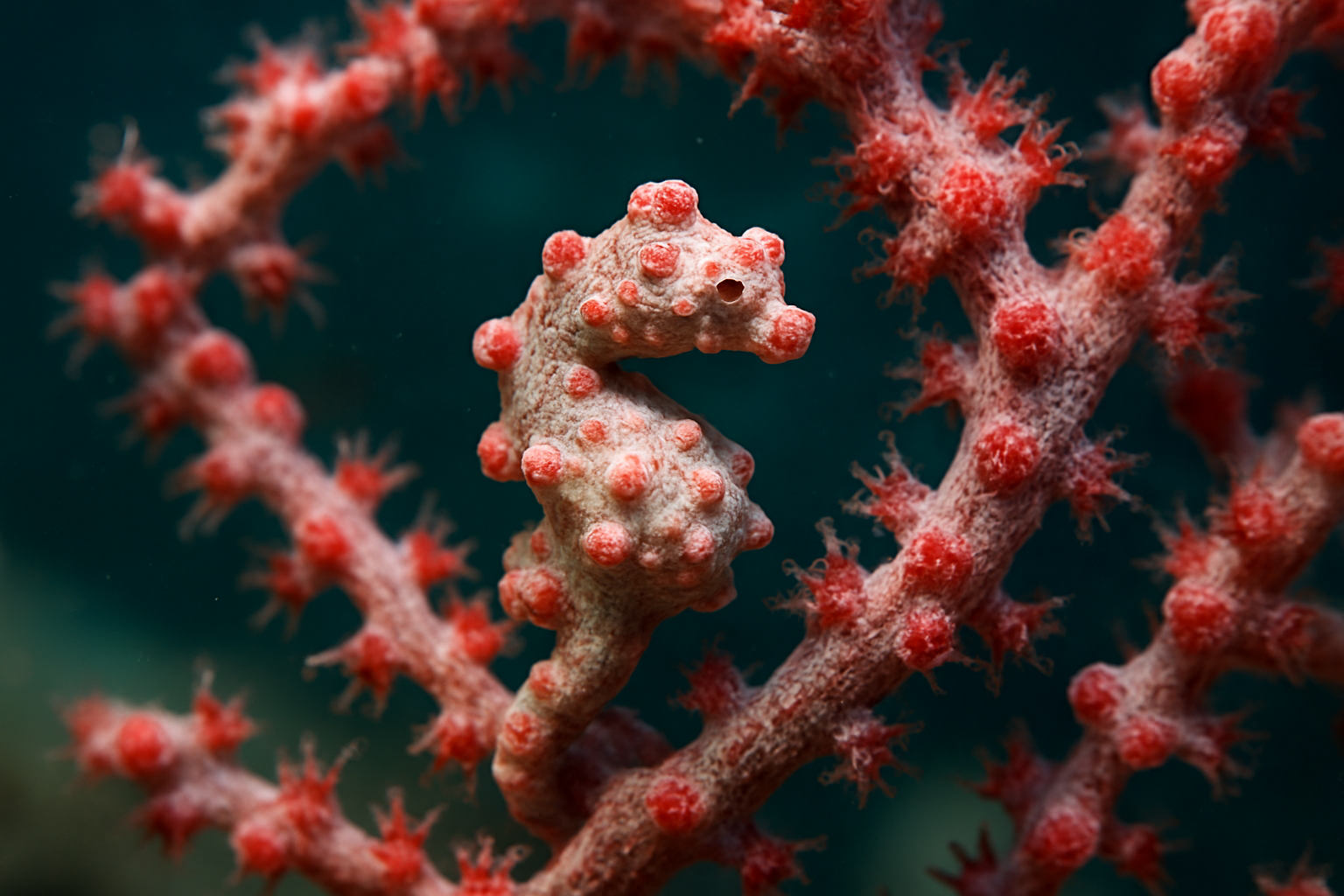The Enigmatic World of Pygmy Seahorses
Delve into the captivating realm of pygmy seahorses, nature's minuscule marvels that have long eluded scientific scrutiny. These tiny creatures, barely the size of a fingernail, have mastered the art of camouflage, seamlessly blending with their coral habitats. Join us as we explore the fascinating adaptations, behaviors, and conservation challenges of these elusive marine wonders.

A Glimpse into Pygmy Seahorse History
The story of pygmy seahorses is one of recent discovery and ongoing revelation. It wasn’t until 1969 that the first species, Hippocampus bargibanti, was officially described. A scientist examining a gorgonian coral specimen stumbled upon these tiny creatures, initially mistaking them for parasites. This serendipitous discovery opened up a new chapter in marine biology, spurring further exploration and research into these elusive beings.
Since then, several more species have been identified, each with its own unique characteristics and habitat preferences. The Denise’s pygmy seahorse (Hippocampus denise), for instance, was only described in 2003, highlighting how much there is still to learn about these miniature marvels. As technology and diving techniques have advanced, researchers have been able to study these creatures in their natural habitats, slowly unraveling the mysteries of their lives.
Masterful Mimicry: The Art of Camouflage
One of the most striking features of pygmy seahorses is their incredible ability to blend in with their surroundings. Unlike their larger seahorse cousins, pygmy seahorses have evolved to mimic specific types of coral with astounding accuracy. Their bodies are covered in tiny tubercles that match the polyps of their host corals, and their coloration can range from vibrant pinks and reds to muted yellows and browns, depending on the species and their chosen habitat.
This camouflage is not just a superficial resemblance; it’s a highly specialized adaptation that has developed over millions of years. The texture of their skin, the shape of their snout, and even the way they move have all been fine-tuned to match their coral homes. This level of mimicry is so effective that even experienced divers and researchers often struggle to spot them, making the study of these creatures a challenging but rewarding endeavor.
Life in Miniature: Adaptations and Behaviors
Despite their small size, pygmy seahorses possess a complex array of adaptations and behaviors that allow them to thrive in their coral reef environments. One of the most remarkable is their reproductive strategy. Like all seahorses, it’s the male that carries and gives birth to the young. However, in pygmy seahorses, this process is even more miniaturized.
The male’s brood pouch is proportionally smaller, and the number of offspring produced in each brood is significantly reduced compared to larger seahorse species. This adaptation is likely a response to their diminutive size and the limited resources available in their specialized habitats. Each brood may only consist of a handful of tiny seahorses, each no larger than a grain of rice.
Feeding behavior in pygmy seahorses is equally fascinating. Their tiny snouts are perfectly adapted for sucking up minute planktonic organisms that drift by their coral homes. They have excellent eyesight, with eyes that can move independently of each other, allowing them to scan their surroundings for both food and potential threats without moving their bodies and risking detection.
Conservation Challenges and Future Prospects
As with many marine species, pygmy seahorses face numerous threats in today’s changing oceans. Their specific habitat requirements make them particularly vulnerable to the effects of climate change and ocean acidification. The gorgonian corals and sea fans that many species depend on are sensitive to changes in water temperature and chemistry, and damage to these habitats can have devastating effects on pygmy seahorse populations.
Additionally, the aquarium trade poses a potential threat. While not as commonly collected as their larger relatives, there is still a demand for these unique creatures in the ornamental fish market. However, their specialized needs and sensitivity to environmental changes make them extremely difficult to keep in captivity, leading to high mortality rates.
Conservation efforts for pygmy seahorses are challenging due to their small size and elusive nature. Population assessments are difficult to conduct, and much about their life cycles and habitat requirements remains unknown. However, as awareness grows, more marine protected areas are being established in regions where these creatures are found, offering hope for their future.
Ongoing Research and New Discoveries
The field of pygmy seahorse research is still in its infancy, with new discoveries being made regularly. Advanced underwater imaging techniques and genetic studies are revealing previously unknown species and shedding light on the evolutionary relationships between different pygmy seahorse populations.
One area of particular interest is the study of their vocalizations. Recent research has shown that pygmy seahorses, like their larger counterparts, produce sounds for communication. These vocalizations are barely audible to the human ear but play a crucial role in courtship and territorial behaviors. Understanding these acoustic signals could provide valuable insights into their social structures and breeding patterns.
As we continue to explore the depths of our oceans, it’s likely that more species of pygmy seahorses will be discovered. Each new finding adds to our understanding of marine biodiversity and underscores the importance of protecting these delicate ecosystems. The story of pygmy seahorses serves as a powerful reminder of the wonders that still await discovery in our oceans and the vital need for marine conservation efforts.





